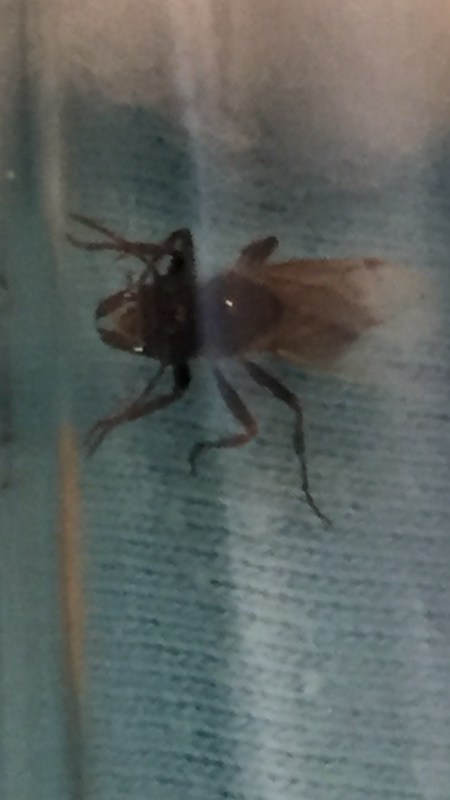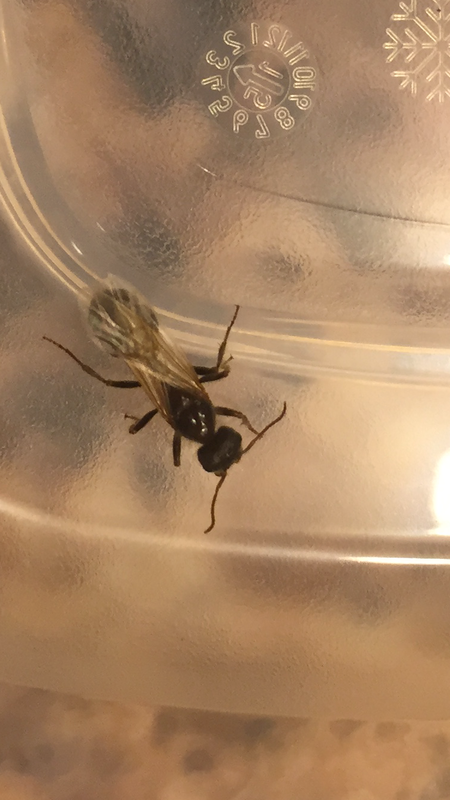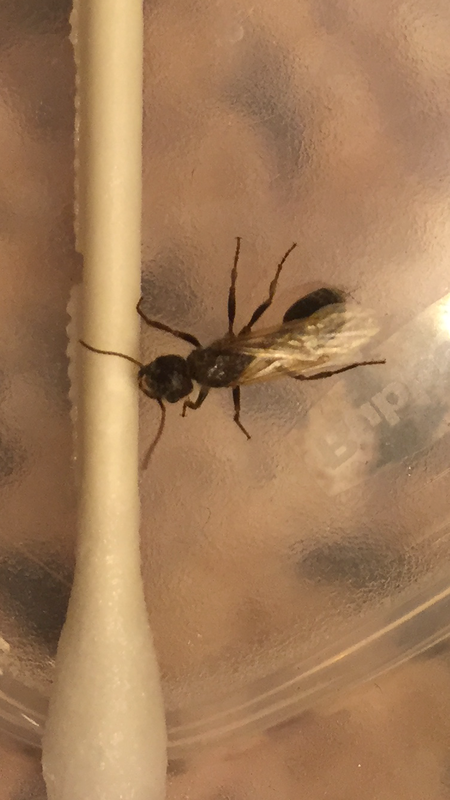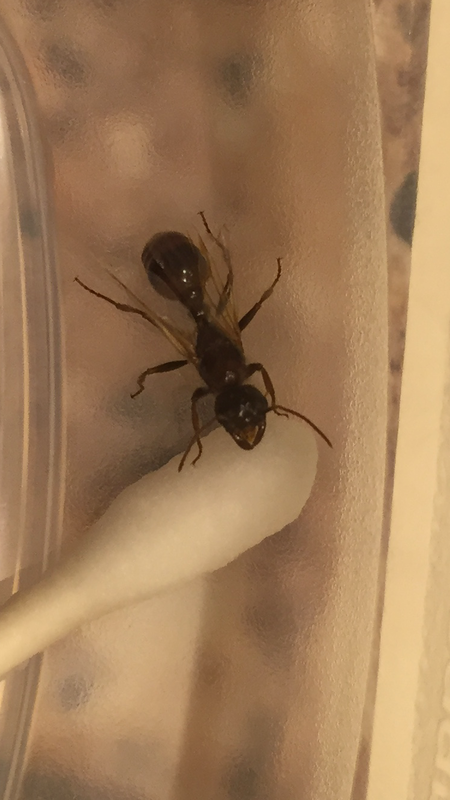2. July 1st 2016
3. The black queen (crematogaster?) was on my window screen, the winged orange (camponotus?) was on my brick wall under the same light, the wingless orange one was running around avoiding what I believe are Pogonomyrmex Rugosus just outside my wall.
4. Black on is 7mm, orange ones 8-9mm
5. What you see is what you get. My eyes are worse than the pictures I'll post.
6. See above
7. Black one doesn't seem to mind when I look at her nearly as much as the orange ones. They freak the [censored] out. The orange ones were also restless for the first day in the test tube where as the black one just tended to her eggs (she laid some in a container before I got test tubes).
8. NA
9. As stated above this is the black queen in a rubber maid container before I got test tubes. She dumped 2 of her wings and laid some eggs. She now has what looks like 2 larvae and around 15-20 eggs.
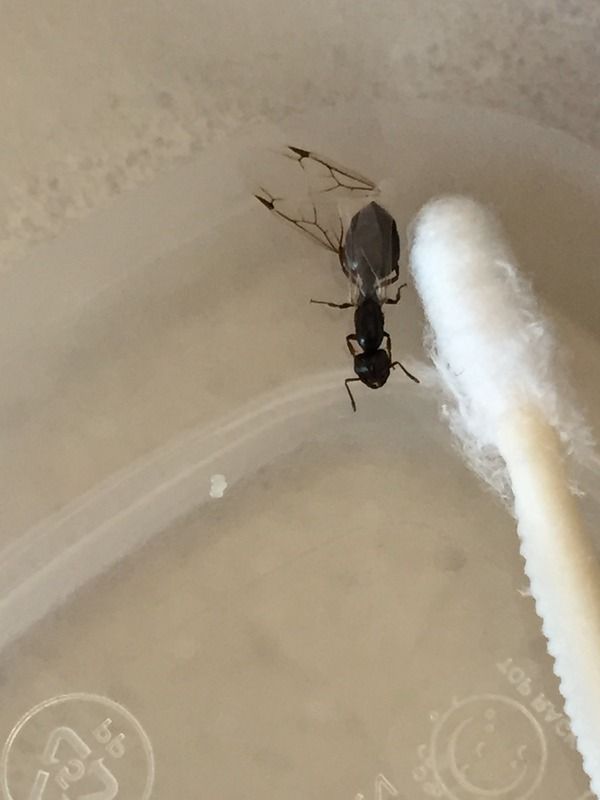
This orange queen has somewhere between 7-12 eggs now.
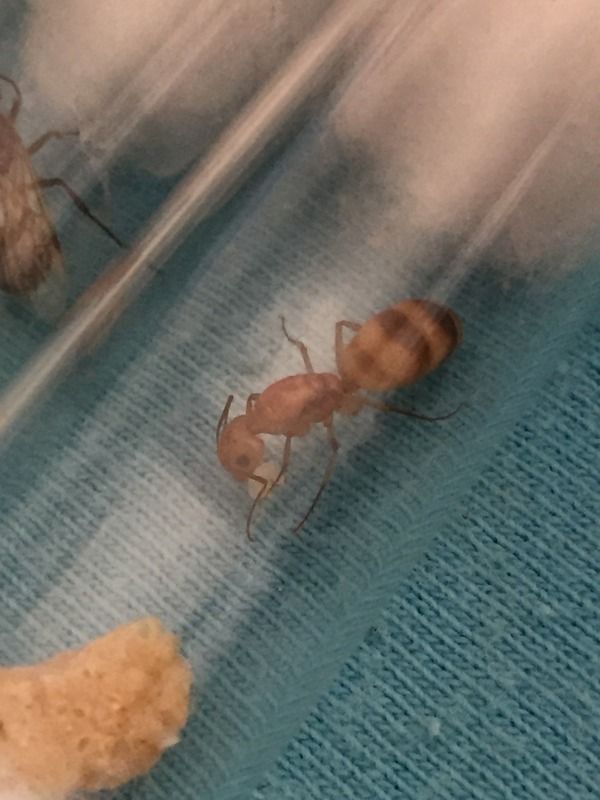
The second orange queen is identical to the above pictures but with wings. I apologize I don't have more pictures, all I have is an iPhone currently. She had more eggs but her cotton molded and she ate the affected eggs after I transferred her to a clean tube. She now has 4-8 eggs.
I had these as well, but was told they were wasps. I was hoping they were Pogonomyrmex Rugosus, that's my dream to have a colony of them.
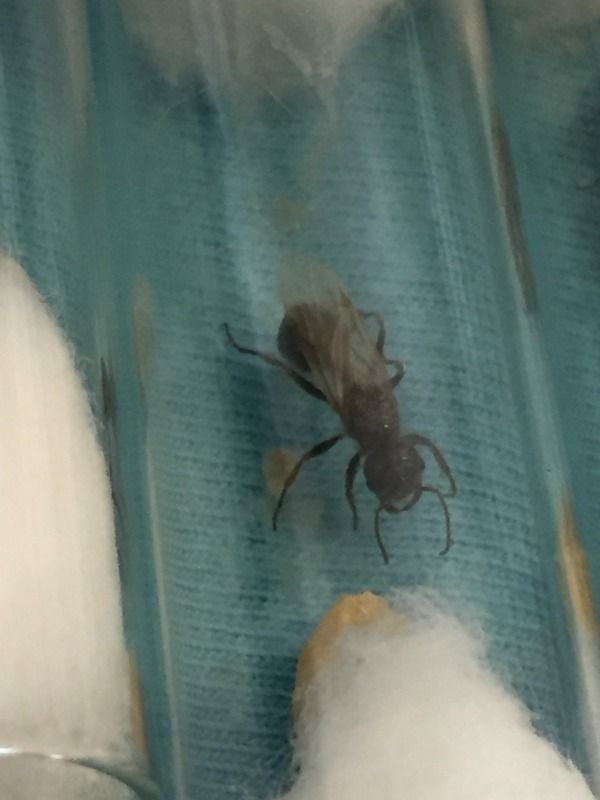
So let me know what you guys think. Any and all help is appreciated.
-Aaron
Edited by dspdrew, July 21 2016 - 10:37 AM.
Removed profanity







